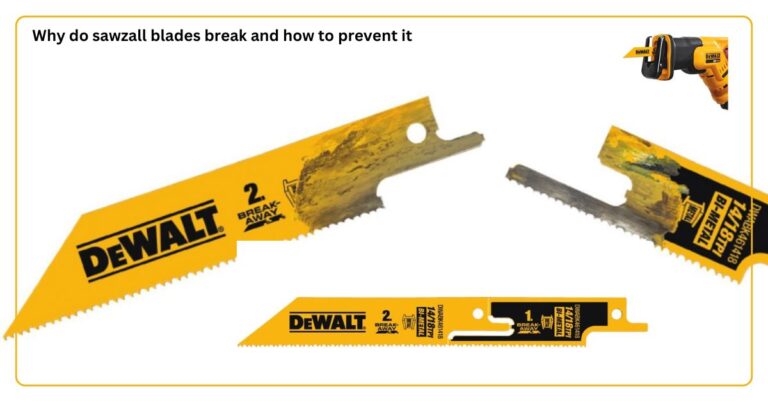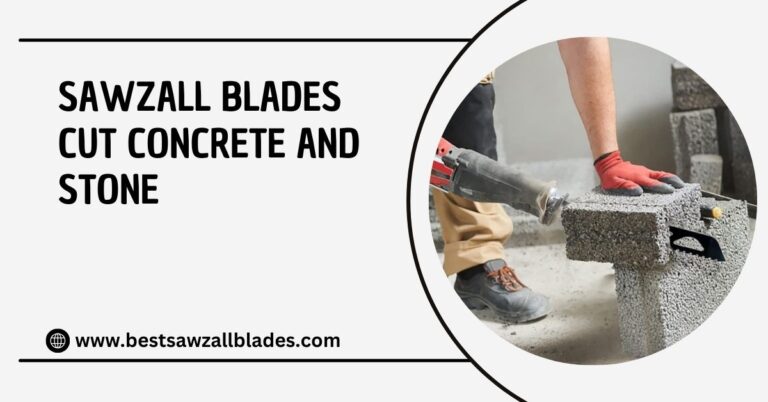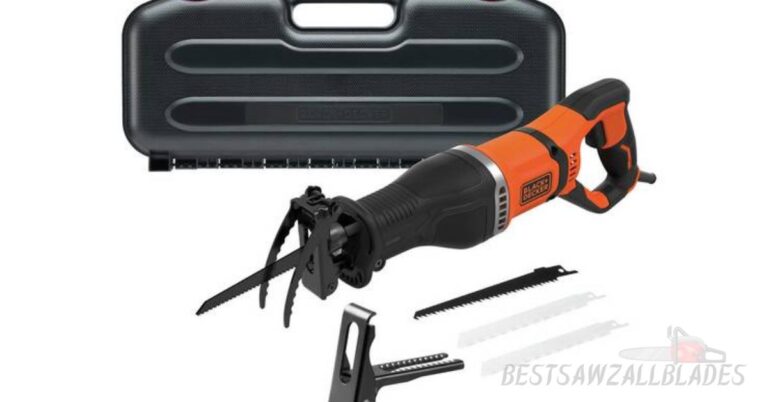A bi-metal Sawzall blade is a premium type of reciprocating saw blade designed to deliver the perfect balance of durability, flexibility, and cutting performance. It’s made by combining carbon steel and high-speed steel (HSS), two metals that complement each other’s strengths.
The carbon steel body offers excellent flexibility, allowing the blade to withstand bending and twisting during tough cuts, while the HSS teeth provide exceptional hardness, wear resistance, and edge retention. This smart metal fusion makes bi-metal Sawzall blades ideal for cutting through a wide range of materials with longer life and consistent precision.
Key Features of Bi-Metal Sawzall Blades
Durability: Bi-metal Sawzall blades outlast standard carbon steel blades thanks to their unique construction of high-speed steel (HSS) and high-carbon steel. This combination makes them perfect for heavy-duty cutting as they’re far less likely to snap under pressure.
Versatile Cutting Ability: These dual-metal blades can power through wood, metal, plastic, and even certain types of light concrete. If you’re choosing the right blade, it’s important to understand what TPI means on a Sawzall blade and why it matters. A higher TPI gives smoother cuts on metal, while a lower TPI makes faster cuts in wood. Their versatility makes them a go-to choice for contractors and DIY enthusiasts who work with multiple materials on the same job.
Heat Resistance: The HSS teeth on bi-metal blades are highly heat resistant, allowing them to maintain sharpness even after prolonged, high-friction cutting tasks.
Flexibility: With a high-carbon steel body, these blades offer superior flexibility, reducing the risk of breaking or bending when tackling thick, dense, or stubborn materials. A common question is why Sawzall blades break and how to prevent it, and the main causes are heat, bending, or using the wrong TPI bi-metal blades.
When to Use a Bi-Metal Sawzall Blade
Bi-metal Sawzall blades are a top choice for projects that involve switching between different materials, perfect for renovations, demolition work, or mixed-material jobs. Their tough design allows them to cut effortlessly through:
- Nails embedded in wood
- Sheet metal
- Pipes and tubing
- Hardwood and softwood
- PVC and plastics
These blades are a favorite among plumbers, electricians, and general contractors because they combine long-lasting durability with the ability to handle a wide range of materials, making them a reliable tool for demanding, all-in-one cutting tasks. While bi-metal blades are versatile, if you’re wondering can Sawzall blades cut through concrete and stone, the answer is that you’ll need specialized masonry blades since concrete quickly wears down standard blades.
Advantages of Bi-Metal Sawzall Blades Over Other Types
Longer Life: Bi-metal Sawzall blades are built to last, often delivering up to 10 times the lifespan of standard carbon steel blades while maintaining cutting efficiency.
Multi-Use: With the ability to cut through metal, wood, plastics, and more, you won’t need to swap blades frequently, saving both time and effort on the job. Many users also ask are Sawzall blades universal or interchangeable, and the good news is that most bi-metal blades feature a standard shank design that fits nearly all reciprocating saws.
Cost-Effective: While they may cost more upfront than regular carbon steel blades, their durability and versatility make them a smarter long-term investment for both professionals and DIY users. Ultimately, using the right blade is efficient and time-saving, coming down to fewer blade changes, faster cuts, and smoother results across different materials.
Conclusion
A bi-metal Sawzall blade is a vital tool for construction workers, contractors, and home improvement enthusiasts who frequently encounter a range of cutting tasks. Combining strength, flexibility, and long-lasting performance, it’s perfect for demanding projects.
Whether you’re cutting wood, metal, or plastic, a bi-metal blade delivers faster, cleaner, and more precise cuts, with fewer blade changes. Choosing a bi-metal Sawzall blade means investing in efficiency, reliability, and unmatched versatility for all your cutting needs.
Frequently Asked Questions
What are the benefits of using a bi-metal Sawzall blade?
Bi-metal Sawzall blades offer greater durability, flexibility, and cutting performance compared to single-metal blades. They work effectively with a variety of materials, including metal, wood, plastics, and more, making them a versatile choice for both professionals and DIY enthusiasts.
What materials can I cut with a bi-metal Sawzall blade?
These blades can handle wood, nails embedded in wood, metal pipes, sheet metal, PVC, plastics, and composite materials, making them ideal for mixed-material cutting tasks.
How do bi-metal blades compare to carbide-tipped blades?
While carbide-tipped blades last longer on extremely hard materials, bi-metal blades are more affordable, flexible, and suitable for a wide range of everyday cutting applications.
Can bi-metal blades be used for demolition work?
Absolutely. Their tough construction and ability to cut through mixed materials, like wood with embedded nails, make them perfect for renovation and demolition projects.
How long do bi-metal Sawzall blades last?
Blade life depends on the material and intensity of use. For general cutting jobs, they can last several hours before dulling, often far outlasting standard carbon steel blades.
Are bi-metal blades suitable for precision cutting?
Yes, the HSS teeth provide a sharp, wear-resistant edge that ensures clean and accurate cuts, especially on metals and hardwoods.
Can I use a bi-metal blade with any reciprocating saw?
Most bi-metal Sawzall blades have a universal shank design, making them compatible with nearly all brands of reciprocating saws.
Do bi-metal blades resist heat during heavy use?
Yes, the high-speed steel teeth are heat-resistant, helping the blade stay sharp and perform consistently even in high-friction cutting tasks.
Are bi-metal blades worth the investment for DIY projects?
Definitely. Their longevity, multi-material capability, and cost-effectiveness make them a great choice for anyone who wants fewer blade changes and more efficient cutting.





